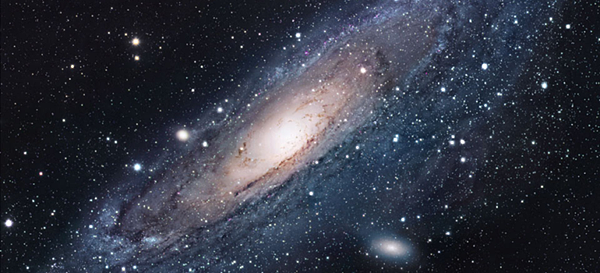UV Rays Strip Small Galaxies of Star Stuff
紫外線脫光了小星系的外衣
By Christopher Intagliata on March 22, 2017
影音說明檔: https://drive.google.com/open?id=0B-Bg0auB-gcoSmlQUGFxRS1YN0U
The Sun spews out ultraviolet radiation - that's why you put on sunscreen. But the Sun isn't the only UV-producing celestial body. "Stars and supermassive black holes produce a huge amount of UV radiation." Michele Fumagalli, an astrophysicist at Durham University in the UK. "And some of this radiation can escape a galaxy, and so this radiation builds up this cosmic UV background."
太陽噴發(spews out)紫外輻射(ultraviolet radiation),這是我們戴太陽眼鏡的原因,但是太陽不是天體裡(celestial body)唯一紫外線製造者,「太陽和超大質量黑洞(supermassive black holes )製造大量紫外輻射」,Michele Fumagalli,英國杜倫大學天體物理學家(astrophysicist),「有些輻射會脫離星系(galaxy ),形成這種宇宙(cosmic )紫外線的基底(background)」
That cosmic UV background permeates the universe. But it's diffuse - meaning hard to measure, especially from here on Earth. "And so the way we do this measurement is with a little trick." That is, when UV radiation hits gas, it gives off a red glow. So Fumagalli and his team used what’s called the MUSE instrument at the Very Large Telescope in Chile to stare - for hours - at the edge of a superthin galaxy, until they saw that red glow.
那宇宙紫外光基底瀰漫在(permeates)整個宇宙,但它是散射的(diffuse),意思是很難量測,特別是從地球散射出去,「所以在測量上我們用了點小撇步(a little trick)」,也就是,當紫外輻射碰到大氣,會釋放出(gives off )出紅色火光,所以Fumagalli和他的團隊在智利甚大望遠鏡,用一種稱作MUSE的儀器,幾個小時盯著這超薄星系的邊緣,直到看到紅色火光(red glow)。
And since they knew how much gas was there, they were able to calculate the intensity of the UV radiation hitting the gas - the cosmic UV background. The finding is in the Monthly Notices of the Royal Astronomical Society.
因為他們知道有多少氣體,所以有辦法計算出紫外輻射撞擊到大氣的強度(intensity),也就是計算出宇宙紫外基底。這份研究報告在英國皇家天文學會的Monthly Notices出版。
That calculation offered clues to another celestial mystery: why we don't see as many small galaxies in the universe as theory would predict. Fumagalli says the UV background radiation might strip away valuable star-forming gas from the small guys.
這項計算提供另一個天體祕密的線索:為何我們看不到理論預測一樣多的小星系?Fumagalli 稱,自外基底輻射可能會剝除(strip away)這些小朋友珍貴的恆星成型氣體(star-forming gas)。
"This is what happens to the small galaxies in the universe. They have gas, which is what's needed to form stars. But if that gas is exposed to intense UV radiation, essentially it evaporates. Which means the galaxies lose their supply of fuel to make new stars. Meaning they don't shine and we do not see them.“
宇宙間的小行星就是這麼回事,它們有氣體可以形成星星,但是假如那氣體暴露在(is exposed to)強力(intense)紫外輻射下,基本上(essentially)就會揮發掉(evaporates),意思就是這些星系失去產生星星的能量的供給(supply of fuel),也就是它們不會閃爍,我們也看不到它們。
So the small galaxies remain dark. But bigger galaxies have a much smaller surface-to-volume ratio of star-forming gas - imagine a whole ocean of water compared to a tiny glassful. UV radiation can't strip away all the gas. So stars form. Like our Sun. Which, when it comes to ultraviolet rays here on Earth, is still the star of the show.
所以小星系仍然漆黑,但是較大的星系的星星形成氣體有很小的表面積和體積比值,想像汪洋大海和小小一杯水(glassful),紫外輻射脫不光所有的氣體外衣,所以星星就得以形成,就像我們的太陽,若講地球上的紫外輻射,太陽(輻射)仍然是主角明星(the star of the show)。




 留言列表
留言列表


